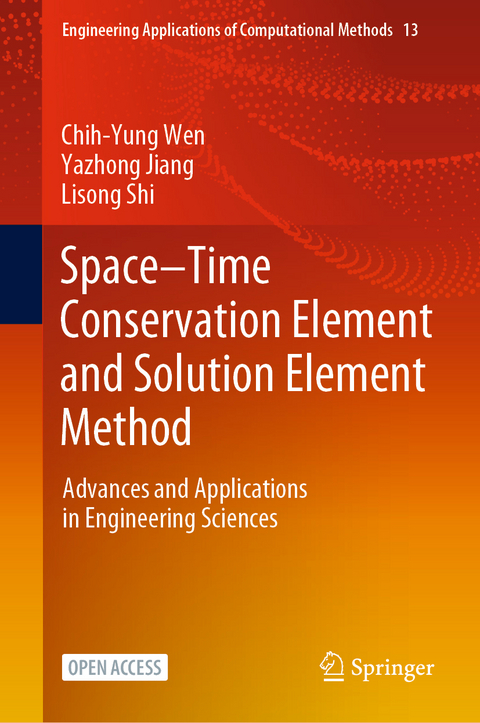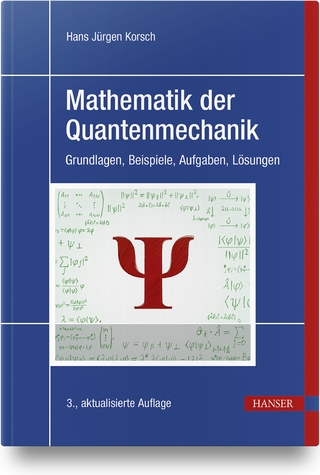
Space–Time Conservation Element and Solution Element Method
Springer Verlag, Singapore
978-981-99-0875-2 (ISBN)
Professor Chih-Yung Wen received his Bachelor of Science degree from the Department of Mechanical Engineering at the National Taiwan University in 1986 and Master of Science and Ph.D. from the Department of Aeronautics at the California Institute of Technology (Caltech), USA, in 1989 and 1994, respectively. He worked at Caltech as a research fellow from February 1994 to July 1994 and then continued his teaching and research works in the Department of Mechanical Engineering at the Da-Yeh University, Taiwan. He was promoted to full professorship in February 2002. He had been the chairman of the Department of Mechanical and Vehicle Engineering from August 1997 to July 2000 and the provost from August 2004 to July 2006 in the Da-Yeh University, Taiwan. In August 2006, Professor Wen joined the Department of Aeronautics and Astronautics of the National Cheng Kung University, Taiwan, before joining the Department of Mechanical Engineering, The Hong Kong Polytechnic University, in2012 as a professor. He served as the associate head of the Department of Mechanical Engineering from May 2015 to October 2019. He is currently the head of the Department of Aeronautical and Aviation Engineering, the chair professor of aeronautical engineering, and the associate director of Research Institute of Sports Science and Technology. Professor Wen has authored and co-authored more than 250 scientific papers, conference papers, and book chapters. He was also awarded 14 patents. Professor Wen, currently a HKIE fellow and an AIAA associate fellow, serves as a member of various key professional boards and bodies related to the Aerospace Engineering. His current research interests are in the areas of aerothermodynamics and boundary layer transition of hypersonic/supersonic vehicles, shock–droplet and shock–bubble interactions, applications of DBD actuators on flow control, experimental fluid mechanics and CFD, numerical simulations and assessment of urban wind field and air pollution, scramjet and oblique detonation engines, detonation, and UAV/MAV technology research and development. Doctor Yazhong Jiang received his Bachelor of Engineering degree in Flight Vehicle Design and Engineering at Shen Yuan Honors College, Beihang University in 2012. He received his Ph.D. in Fluid Mechanics at School of Aeronautic Science and Engineering, Beihang University, in 2018. Then, he joined Department of Mechanical Engineering at the Hong Kong Polytechnic University as a research assistant in December 2018. He joined Department of Engineering Structure and Mechanics as an assistant professor at Wuhan University of Technology since September 2021. His research interests include: (1) rarefied gas dynamics and gas-kinetic theory; (2) hypersonic and non-equilibrium aerodynamics; (3) molecular simulation of gas flows; (4) numerical methods for computational fluid dynamics. Doctor Lisong Shi received his Bachelor of Engineering degree from Nanjing University of Aeronautics and Astronautics in 2012 and Master of Science and Doctor of Philosophy from The Hong Kong Polytechnic University in 2014 and 2018, respectively. He joined Department of Aeronautical and Aviation Engineering at The Hong Kong Polytechnic University as a postdoctoral fellow since January 2021. His current research interests are in the areas of detonation simulations with the Conservation Element and Solution Element method, including the re-initiation mechanisms of a diffracting detonation wave, vibrational non-equilibrium effect on detonation dynamics, reacting shock–bubble interactions, and rotating detonation waves.
Introduction.- Non-dissipative Core Scheme of CESE Method.- CESE Schemes with Numerical Dissipation.- Multi-Dimensional CESE Schemes on Cartesian Meshes.- CESE Schemes on Unstructured Meshes.- High-Order CESE Schemes.- Numerical Features of CESE Schemes.- Application: Hypersonic Aerodynamics.- Application: Compressible Multi-Fluid.- Other Applications.- Summary.
| Erscheinungsdatum | 05.05.2023 |
|---|---|
| Reihe/Serie | Engineering Applications of Computational Methods |
| Zusatzinfo | 44 Illustrations, color; 16 Illustrations, black and white; IX, 139 p. 60 illus., 44 illus. in color. |
| Verlagsort | Singapore |
| Sprache | englisch |
| Maße | 155 x 235 mm |
| Themenwelt | Mathematik / Informatik ► Informatik |
| Mathematik / Informatik ► Mathematik ► Analysis | |
| Mathematik / Informatik ► Mathematik ► Angewandte Mathematik | |
| Naturwissenschaften ► Physik / Astronomie | |
| Technik ► Maschinenbau | |
| Schlagworte | CESE method • Compressible flow • Computational Aeroacoustics • computational fluid dynamics • Conservation element and solution element method • Detonation Wave • Discontinuity capturing • High-order scheme • hyperbolic conservation laws • interfacial instability • Material Interface • Multiphase Flow • numerical method • numerical simulation • open access • shock capturing • Shock Wave • Space-time coupling • Staggered mesh • Unstructured mesh |
| ISBN-10 | 981-99-0875-2 / 9819908752 |
| ISBN-13 | 978-981-99-0875-2 / 9789819908752 |
| Zustand | Neuware |
| Haben Sie eine Frage zum Produkt? |
aus dem Bereich


